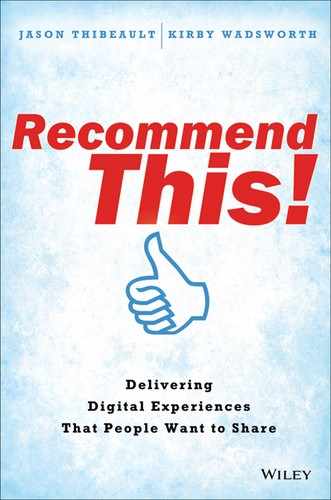Foreword
In Revenue Disruption, I claimed that virtually all buying processes—whether as consumers or businesspeople—begin well out of reach of traditional advertising, marketing, and sales activities. At this very early stage, buyers may have an idea about something they want, a feeling about an unmet need, a vague sense that there must be something out there to scratch an itch. Buyers search online, and begin to conduct research—whether they consciously realize they are doing so or not. They begin to scope out their options. They ask their networks of friends and connections for advice and recommendations. They latch on to helpful content, wherever they find it. And today, most often this all happens online, often anonymously, in the vast and ever-changing sea of digital and social media.
In response, I introduced the term seed nurturing: the notion that any organization with something to sell must get to these protobuyers early on, providing useful information to mold the buyer’s process and planting the seeds for a future sale. Yet at this early stage of the revenue cycle model, it is very uncommon for a vendor to have a relationship with these protobuyers, and even if it does, it’s unlikely that the vendor knows that these early-stage buyers are considering its offerings. The organization and the buyer are strangers.
But there is rich pay dirt here. If we can begin to master this early stage of the revenue cycle, our organizations have an opportunity to stand out, separate from the pack, outcompete our rivals, and drive real, profitable revenue growth. To do this, we must redefine our marketing and sales process. Success is no longer about finding buyers, it’s about being found by those who might eventually value our offerings and services.
And once we do attract early interest, the focus must be on developing long-term relationships with prospects, rather than clumsily trying to close them. If we hand inbound leads—precious gems generated at this early stage through our compelling content and helpfulness—to a greedy, sales-driven next step, we risk abject disaster.
Early-stage buyers are firmly in control of their buying process. They don’t want to talk to a salesperson, or even register on an online site . . . yet. And in the digital world they have a most important power—instant and frictionless choice. A better, friendlier, more helpful alternative is only a mouse click away.
So we have a gap. Let’s call it the relationship gap. Early-stage buyers are interested in learning about us and our organization’s products. They do want to hear suggestions and advice, and they are open to input on how to evaluate solutions and make decisions. They will take all that, and more, into consideration if (and it’s a huge if) they trust that the information is fair and balanced, and the organization offering it is attempting to be authentic, transparent, and helpful.
To succeed at this stage we must focus on developing relationships with these potential customers, building trust and creating a sense of collegial friendship. We must move from ABS (always be selling) to ABT (always be teaching). Or even to ABDR (always be developing relationships).
Digital is becoming the first stop in a new buyer’s journey. Trying to understand what visitors want, or might want, when they first interact online with our organizations is hard. But it is not optional. If we are going to build true relationships with these protobuyers, we have to capture their attention, build trust, and seek to begin a two-way conversation with them. Technology can help. But technology alone doesn’t solve the core issue. We must transform our entire approach to business. Innovative marketing and sales leaders will dramatically rethink traditional roles and processes to embrace the relationship revolution. Those who do will grow their networks of buyers and recommenders. In doing so, they will find a new source for the true sustained, profitable, top-line growth that every company needs.
Throughout their many years in business, Kirby and Jason have proven themselves not just innovative thought leaders, but also researchers and guides in our collective journey toward improved revenue process management. Recommend This! does a fantastic job of uncovering and supporting the value of relationships. Moreover, it provides a clear method for quantifying that value—a method that will certainly stir debate, and may even spawn a new branch on the marketing analytics tree. Finally, the book gives us a set of simple, crisp, actionable steps to help us optimize prospect and customer relationships at scale using digital technologies.
Recommend This! is a must for anyone who needs to understand how digital relationships change the way we do business, who seeks the means to measure and manage relationships, and who has the determination to drive revolutionary change by focusing the organization on what’s really important—relationships.
—Phil Fernandez
